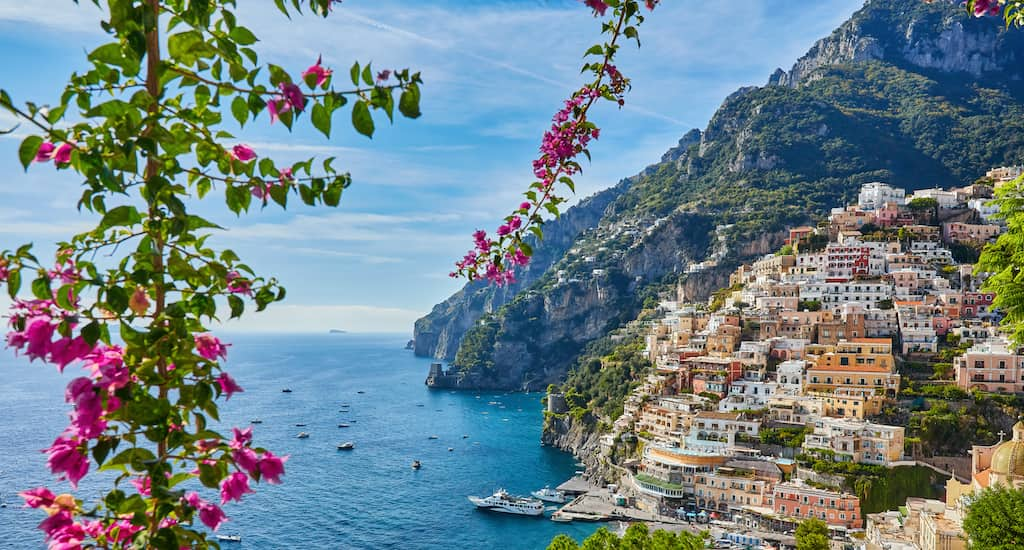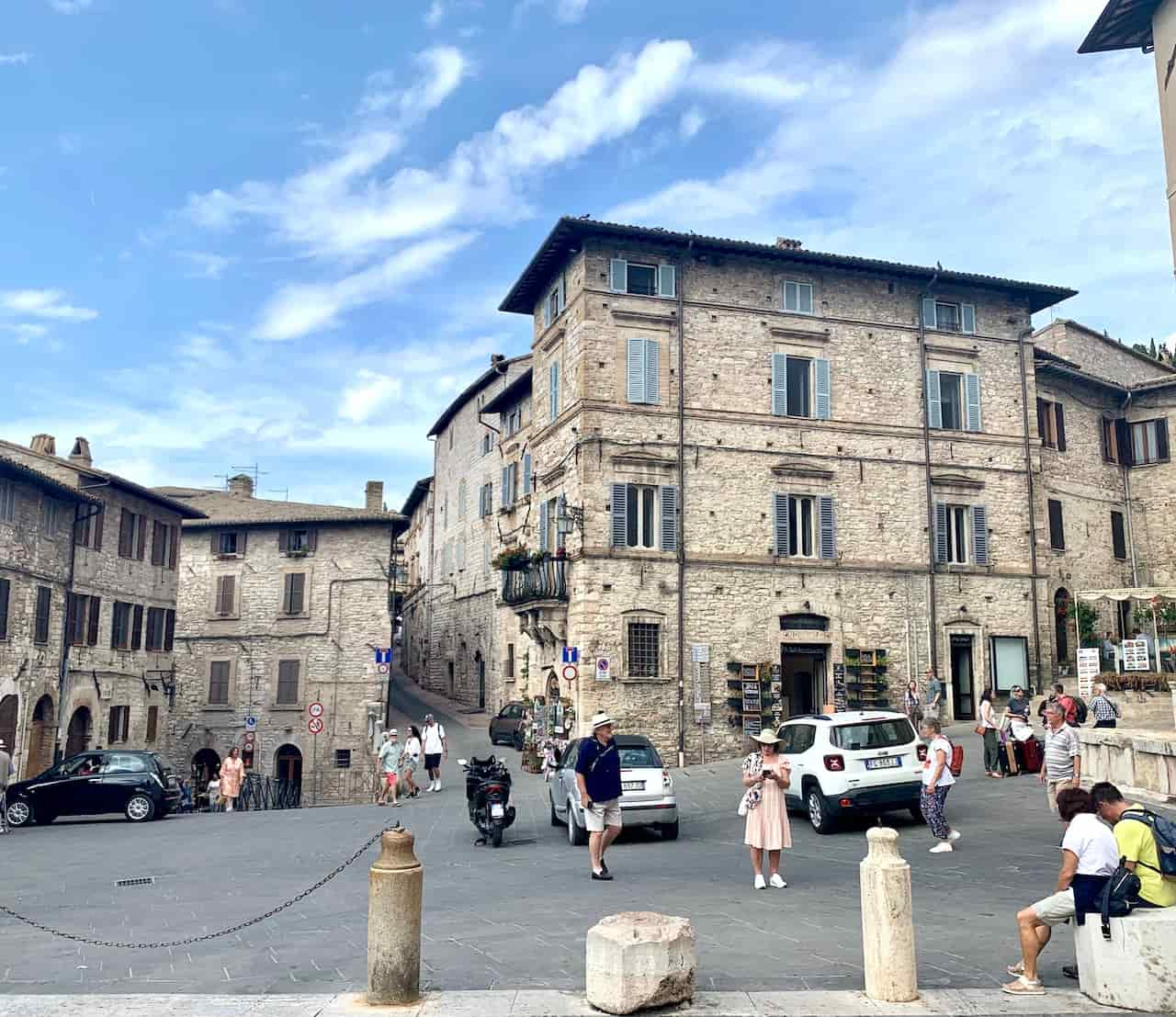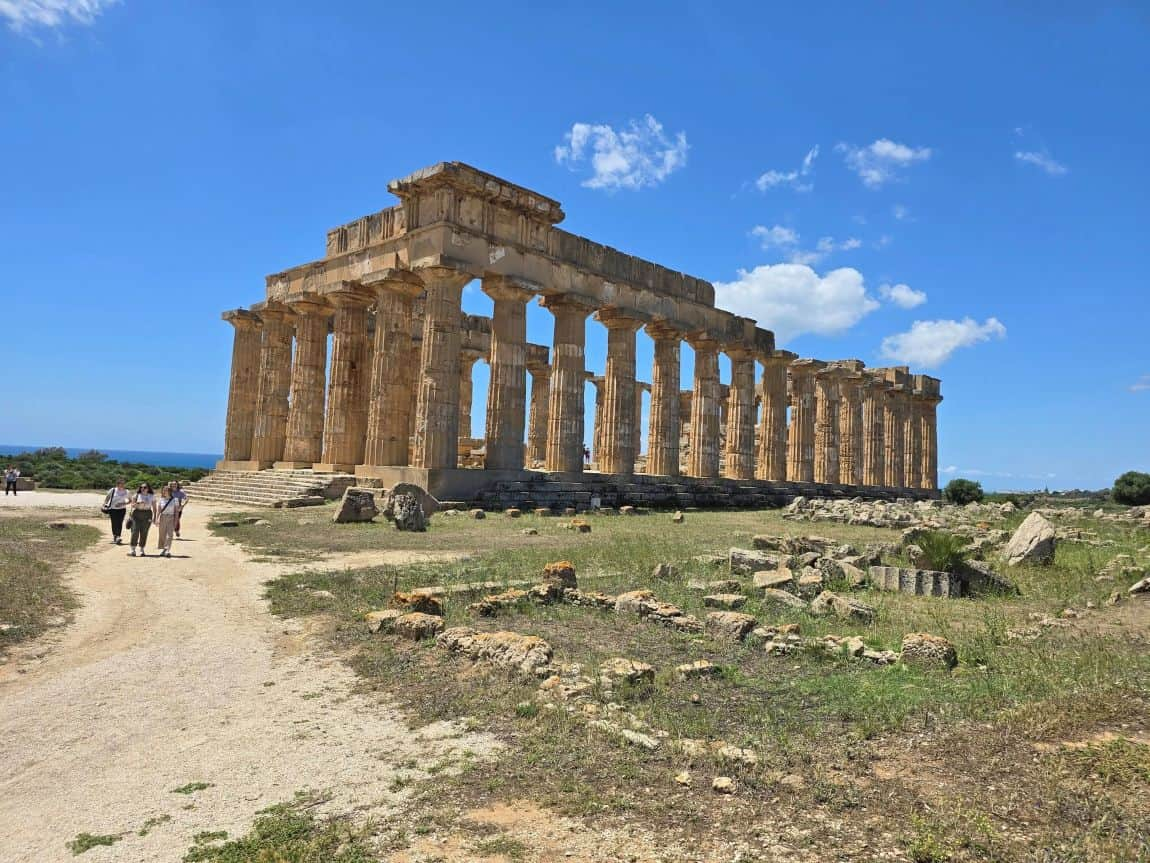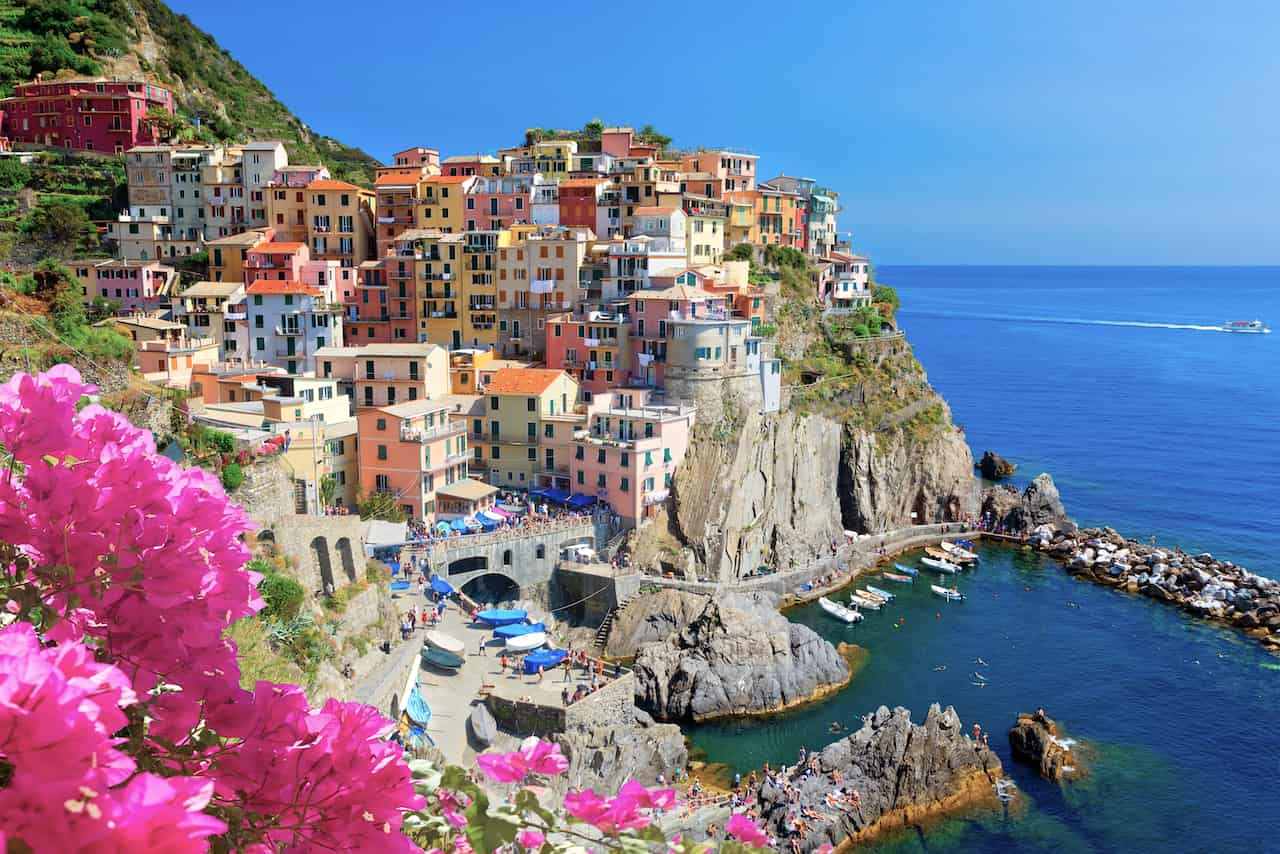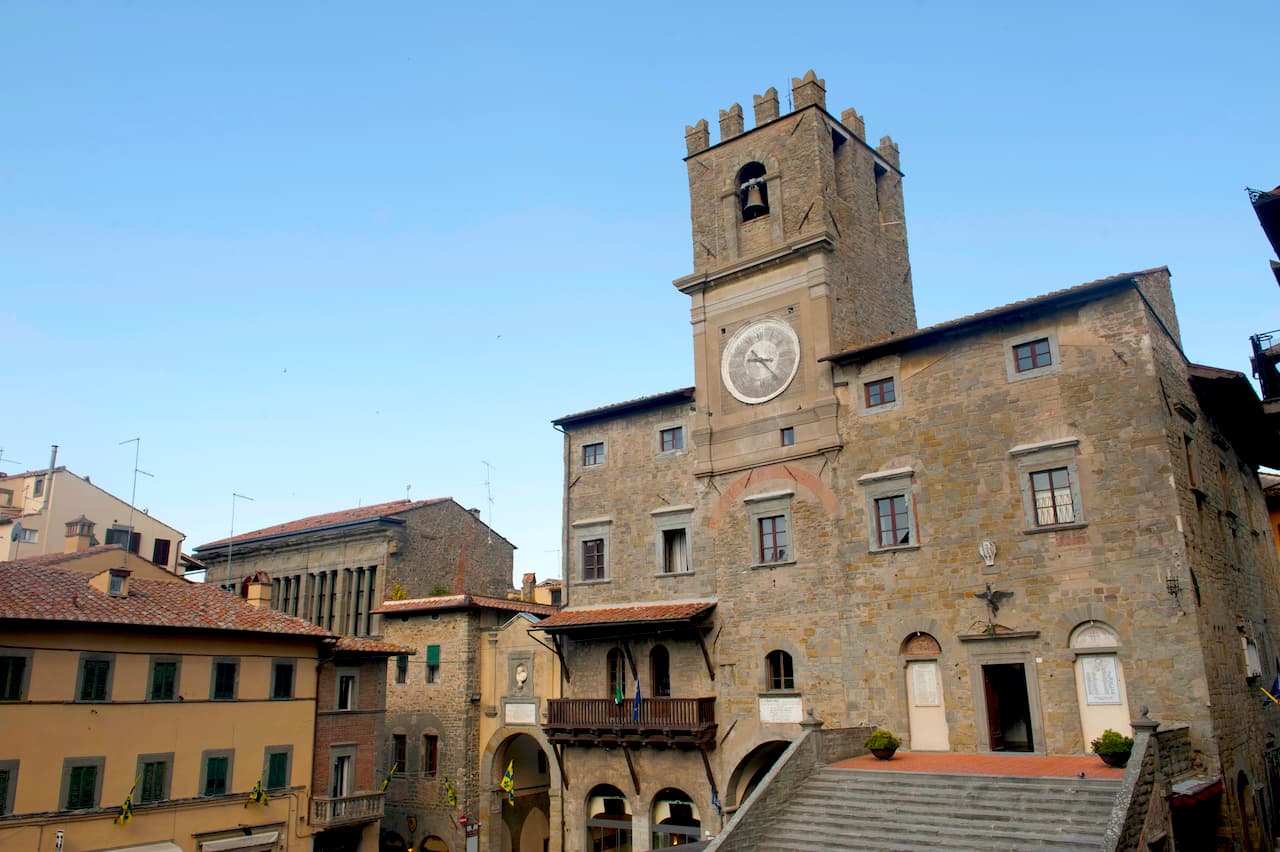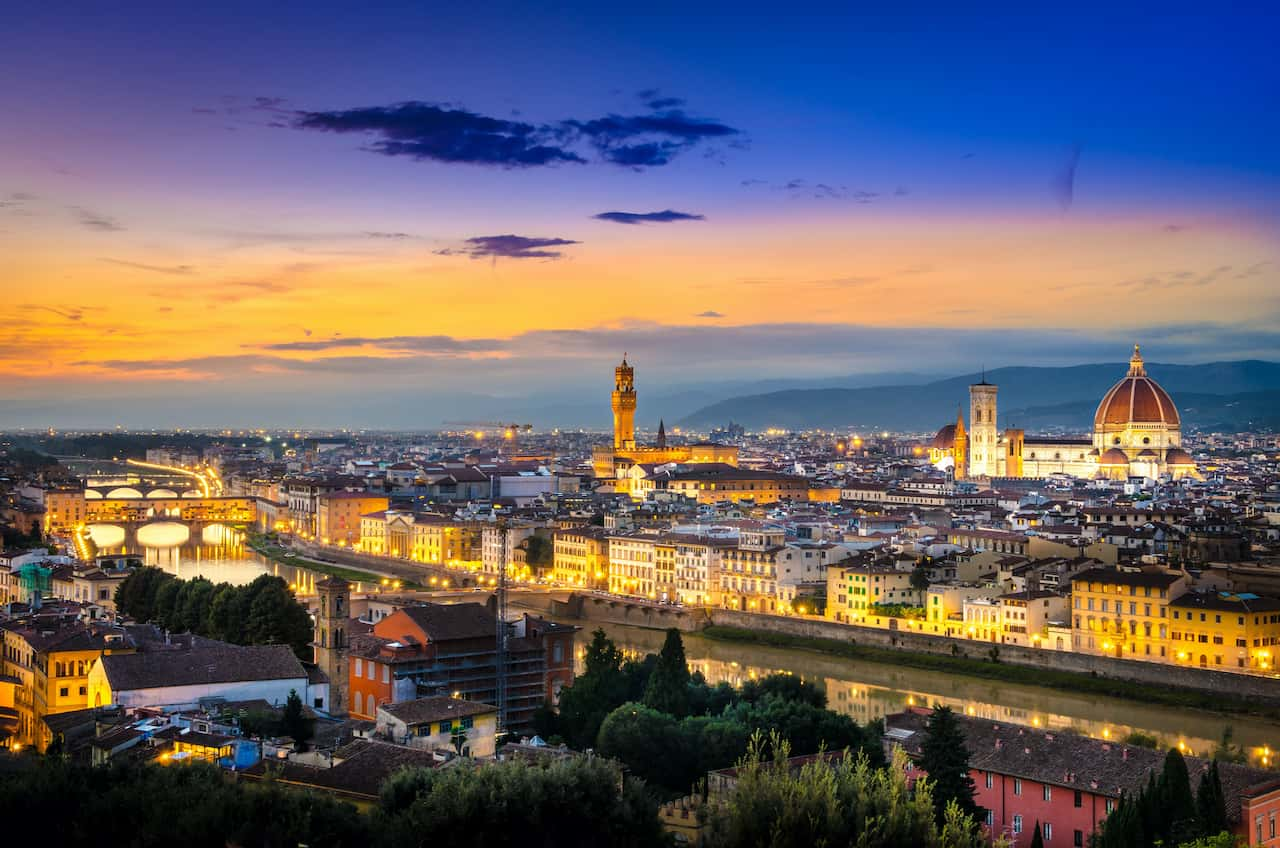25 Traditional Sicilian Foods You’ll Regret Not Trying in Sicily
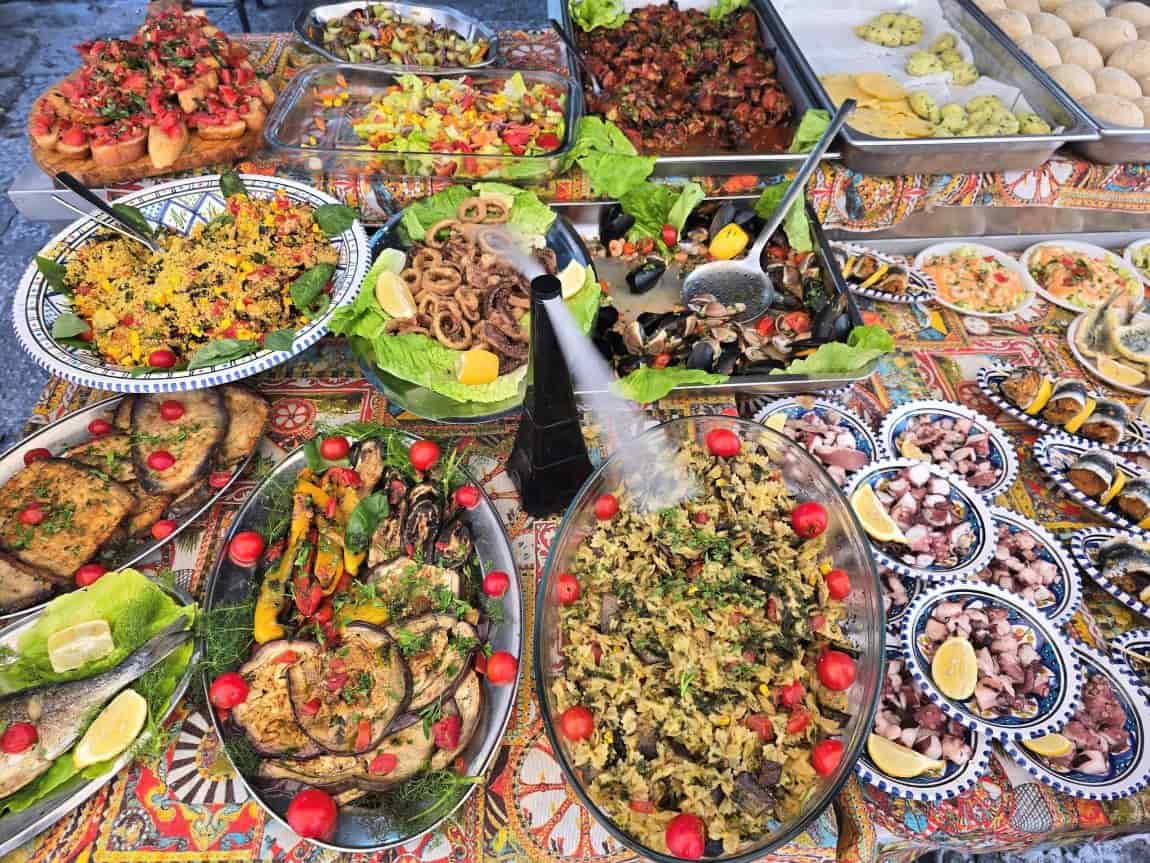
A foodie’s guide to Sicily: 25 must-try dishes of traditional Sicilian food that showcase the island’s history, culture, and unforgettable flavors.
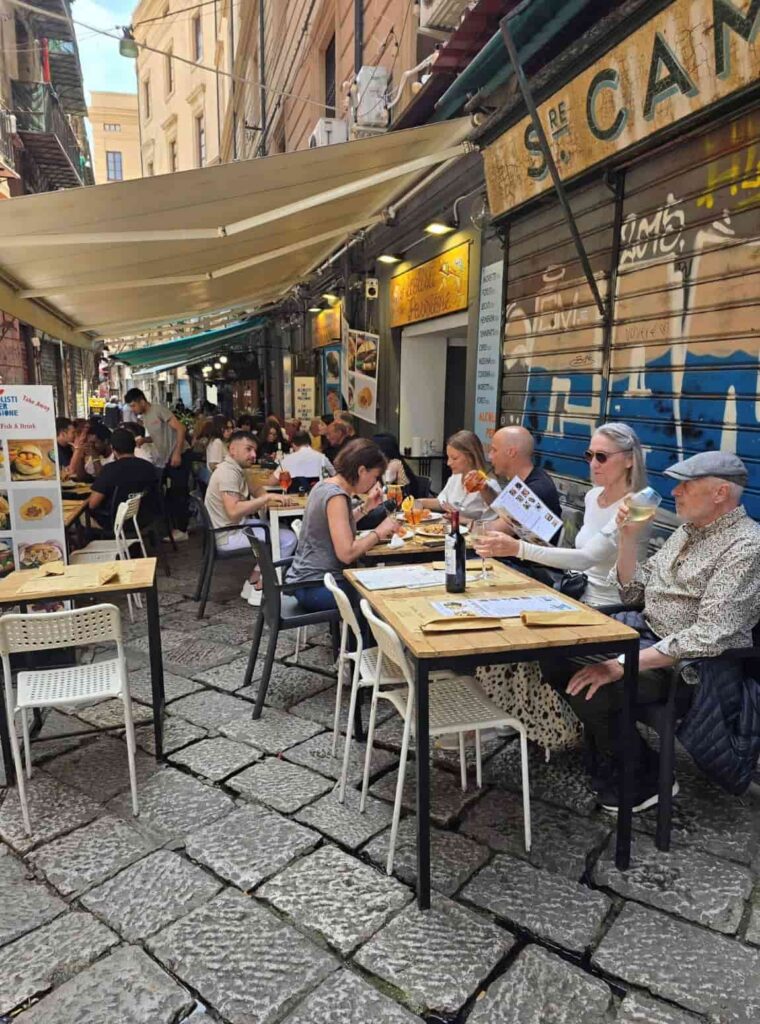
When I planned my Sicily road trip—Palermo, Monreale, Cefalù, Segesta, Scopello, Trapani, Erice, Selinunte, Scala dei Turchi, Agrigento, the Valley of the Temples, Villa Romana del Casale, Syracuse, Ragusa, Modica, Noto, Scicli, Catania, and Taormina—I knew I was in for history, beaches, and hilltop towns. But honestly? The food stole the show.
Authentic Sicilian cuisine is unlike anywhere else in Italy. It’s a mix of Greek, Arab, Spanish, and Norman influences, all woven into one mouthwatering tradition. And when you’re traveling around the island, you can (and should) eat your way through its specialties—because the best traditional Sicilian food isn’t just about taste, it’s about culture.
THIS POST MAY CONTAIN COMPENSATED LINKS. PLEASE READ MY DISCLAIMER FOR MORE INFO.
Best Traditional Sicilian Food
Here are the best authentic Sicilian dishes that made my Sicily bucket list—and should make yours too.
1. Pasta con le Sarde e Finocchietto – Palermo & Catania
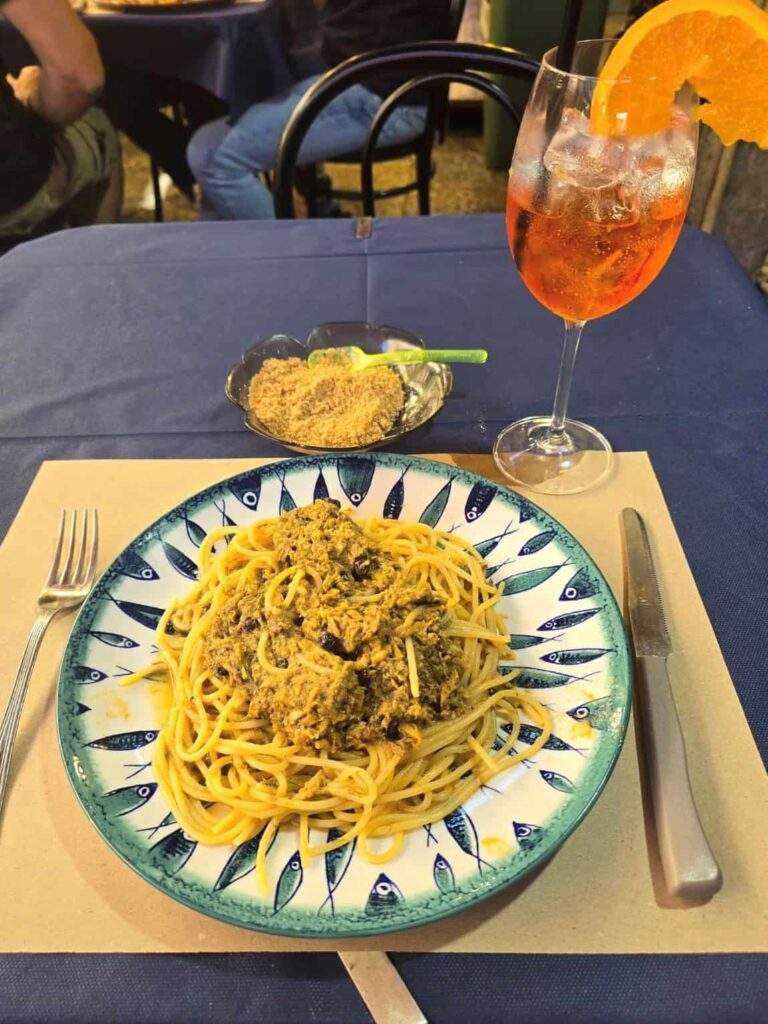
If you only try one pasta in Sicily, make it this one. Pasta con le sarde e finocchietto is basically the island on a plate. Imagine fresh sardines, wild fennel, pine nuts, raisins, and saffron all tossed with bucatini pasta. Then, instead of cheese, you get a layer of golden, crunchy breadcrumbs on top.
The dish actually goes way back to Arab times, when raisins and saffron first arrived on the island. The combination might sound unusual, but trust me—it works. You get sweet, salty, herby, and nutty all in one forkful.
Try it in Palermo (Osteria Ballarò is a great pick) or in Catania near the fish market at Antica Marina. Either way, this is one of the best traditional Sicilian foods to tick off your list.
Read more: How to Spend 2 Perfect Days in Palermo, Italy
2. Pasta alla Norma – Catania
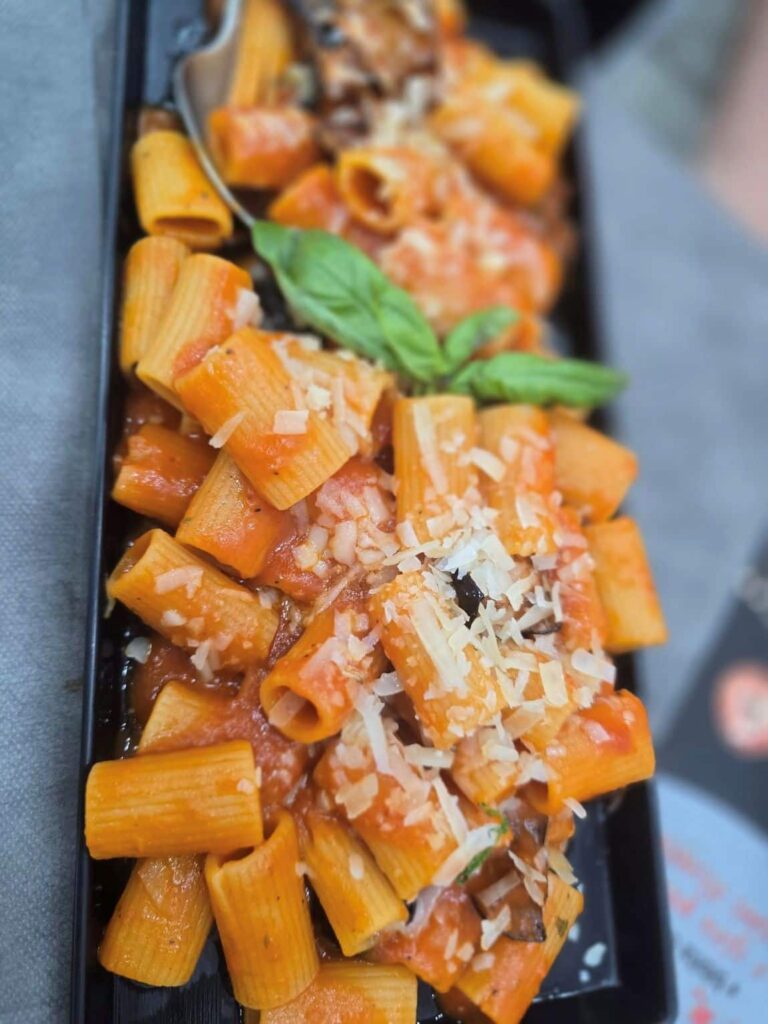
This one is pure comfort food. Born in Catania and named after the opera “Norma” by Vincenzo Bellini, Pasta alla Norma is a simple but unforgettable dish: fried eggplant, rich tomato sauce, basil, and a snowfall of ricotta salata (that salty, crumbly sheep’s cheese).
It’s hearty but still feels fresh, and every local will tell you it’s the pasta that defines Sicilian cooking. There are lots of versions across the island, but in Catania, it’s basically a religion.
Order it at Trattoria da Nuccio or Osteria Antica Marina in Catania—you’ll understand why it’s one of the must-try Sicilian foods.
3. Busiate alla Trapanese – Trapani & Erice
Over in western Sicily, pasta takes a different twist—literally. Busiate is a long, spiral pasta that locals hand-roll around a thin rod. It’s usually served with pesto alla trapanese: fresh tomatoes, almonds, basil, garlic, and olive oil blitzed together into a raw, punchy sauce.
The story goes that Genoese sailors brought pesto here, but the Trapanese swapped pine nuts for almonds and added juicy Sicilian tomatoes. The result? A sauce that’s lighter, sweeter, and fresher than the Ligurian version.
The best spot? Trapani itself—Cantina Siciliana is a great choice—or in the hill town of Erice, where it tastes even better with a sea view.
4. Melanzane alla Parmigiana – Palermo, Catania & Beyond

One of the most beloved traditional Sicilian foods is Melanzane alla Parmigiana—Sicily’s answer to ultimate comfort food. While you’ll see Parmigiana across Italy, the Sicilian version is something special.
It’s made by layering fried eggplant slices with tomato sauce, basil, and cheese, then baking it until golden and bubbling. In Sicily, sharper cheeses like caciocavallo or pecorino are often used, giving it a bolder, more rustic flavor than the mozzarella-heavy mainland versions. Every family has their twist—some grill instead of frying, others add mortadella or hard-boiled egg—but the result is always hearty and satisfying.
The name may come from “parmiciana,” Sicilian for wooden shutter slats, which resemble the stacked eggplant slices. Whatever its origin, Parmigiana is a dish that defines Sicilian home cooking: simple ingredients transformed into pure comfort.
Best tried in Palermo, Catania, or Ragusa’s trattorie.
5. Couscous alla Trapanese – Trapani
Here’s where Sicily reminds you how close it is to North Africa. In Trapani, couscous isn’t just a dish—it’s part of the culture, thanks to centuries of Arab influence. Unlike the fluffy couscous you might know, here it’s steamed slowly, packed with flavor, and topped with a rich fish broth loaded with grouper, red mullet, or whatever’s freshest from the market.
The flavors are bold but balanced: slightly spicy, deeply savory, and comforting all at once. Some versions even add almonds or cinnamon for an extra twist. It’s a dish that feels familiar and exotic at the same time.
Don’t miss it at Cantina Siciliana in Trapani or during the annual Cous Cous Fest in San Vito Lo Capo. Rea moer: A Guide to Trapani, Sicily.
6. Couscous al Pistacchio – Agrigento
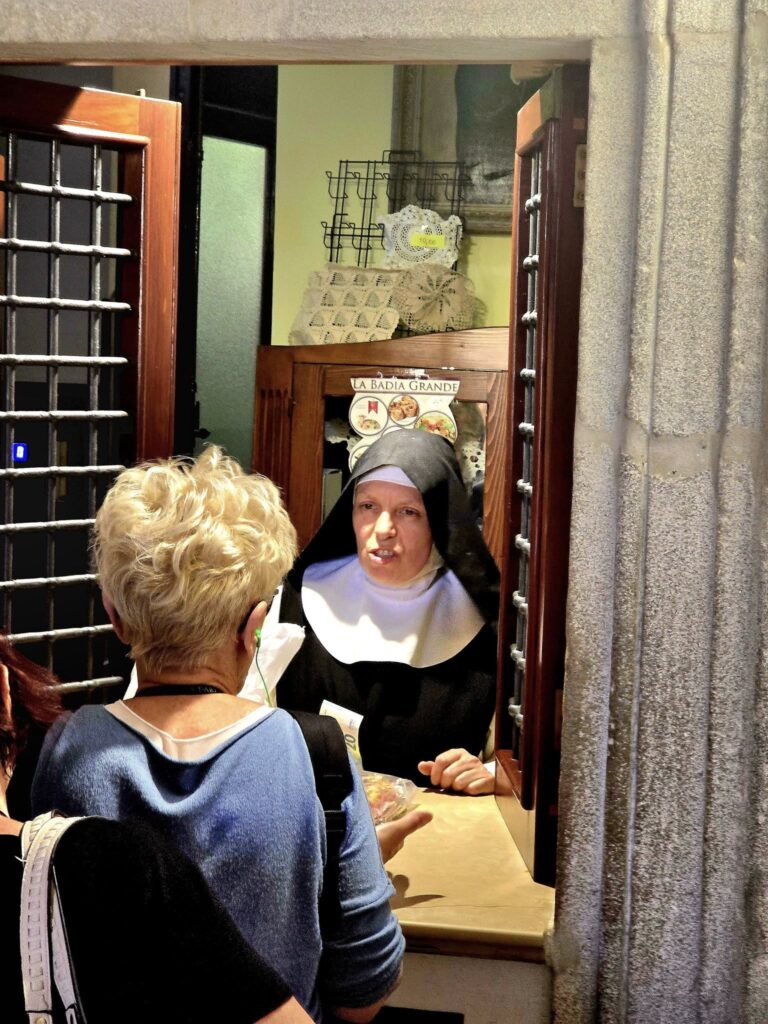
Most people know Couscous alla Trapanese, but in Agrigento, there’s an extraordinary variation you won’t find anywhere else: Couscous al Pistacchio, made by the nuns of the Monastery of Santo Spirito. This centuries-old recipe blends Sicily’s Arab roots with the island’s passion for pistachios.
The dish uses hand-rolled couscous steamed until light and fluffy, then enriched with crushed pistachios, sugar, cinnamon, and sometimes candied fruit. Unlike savory couscous, this version is a sweet delicacy—almost like a dessert. It reflects the creativity of Sicily’s cloistered kitchens, where nuns became masters of pastry and sweets, passing their recipes down in secret.
Why try it? Because it’s a unique piece of Sicilian culinary history, found only in Agrigento, and it showcases how Sicily blends flavors from many cultures into something truly its own.
The only place to taste it is the Monastery of Santo Spirito in Agrigento, sold directly by the nuns. Read more: A Guide to Agrigento, Sicily
7. Arancini – Everywhere in Sicily (but especially Palermo & Catania)

If Sicily had a street food mascot, it would be the arancino. These golden-fried rice balls are crispy on the outside and gooey in the middle, stuffed with things like ragù, mozzarella, peas, or even pistachio cream if you’re in Catania.
Here’s the fun part: in Palermo, they’re usually round and called arancine, while in Catania, they’re cone-shaped arancini. Locals will argue endlessly about which version is “correct,” but honestly, just eat both.
Why try it? Because no Sicilian adventure is complete without biting into a hot, crunchy arancino while wandering through a market or piazza.
Grab one at Bar Savia in Catania or Antica Focacceria San Francesco in Palermo. You can also try arancine on the Palermo street food tour and the Catania street food tour.
8. Sfincione – Palermo

Forget pizza—Palermo has sfincione, its own take on it. Picture a thick, fluffy focaccia-style bread topped with tomato sauce, onions, anchovies, oregano, and caciocavallo cheese. Street vendors often serve it from big trays, slicing you off a steaming square.
It’s not elegant, but it’s addictive. The slightly sweet onions, the tang of tomato, and the salty anchovy make every bite rich and satisfying. This is working-class food at its best—created as an affordable meal for Palermo’s people.
Head to the Ballarò Market in Palermo or ask for “u’ sfincione” from a local street vendor.
9. Sarde alla Beccafico – Palermo
This dish is pure Sicilian ingenuity. Fresh sardines are rolled up with breadcrumbs, pine nuts, raisins, and orange zest, then baked until golden. The name “beccafico” comes from a little bird the Sicilian nobility once ate; the poor couldn’t afford that, so they recreated the flavors with sardines instead.
The mix of sweet and savory is classic Sicilian: the raisins and citrus balance the briny sardines perfectly. Served with a squeeze of lemon, it’s light, delicate, and a true taste of the island’s history.
Best tried in Palermo, especially at trattorias like Osteria Mangia e Bevi.
10. Spaghetti ai Ricci di Mare – Coastal Towns (Syracuse, Catania, Trapani)
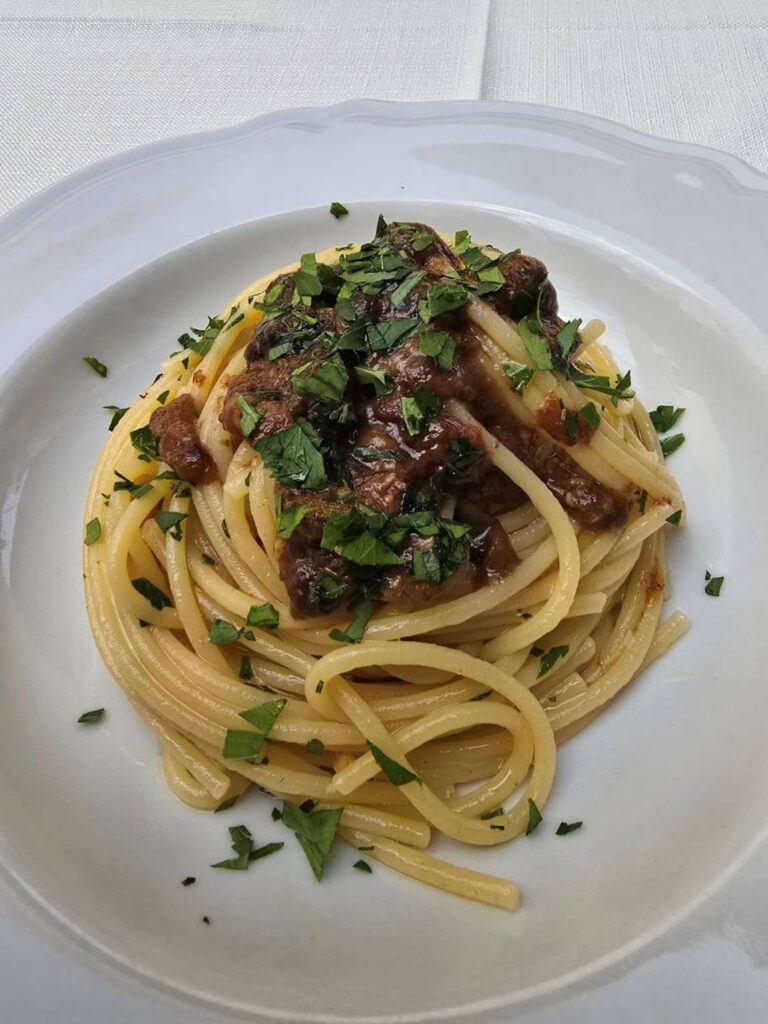
This one is for seafood lovers. Spaghetti ai ricci di mare is pasta tossed with sea urchin roe—creamy, briny, and intensely ocean-flavored. It’s like eating a mouthful of the Mediterranean.
It’s not always available (only when the sea urchins are in season), but when it is, you’ll find it in coastal towns where fishermen bring it straight to the table.
Look for it in Syracuse by the Ortigia fish market or in Catania’s seafront restaurants. If it’s on the menu, don’t hesitate—it’s one of the most unforgettable seafood pastas you’ll ever try. Read more: A Guide to Syracuse, Italy.
11. Bottarga – Favignana & Western Sicily
If truffles are the “gold of the earth,” then bottarga is the “gold of the sea.” It’s made from cured tuna or mullet roe, pressed and dried into a block, then shaved or grated over pasta. The flavor? Intensely savory, briny, and a little nutty—like concentrated ocean.
Sicily’s best bottarga comes from Favignana (in the Aegadian Islands), where tuna fishing has been a tradition for centuries. A simple dish of spaghetti with olive oil, garlic, and grated bottarga is one of the most luxurious things you can eat in Sicily.
Try it in Trapani or in the islands around Marsala and Favignana. Look for it on menus as spaghetti con bottarga.
12. Scacciata – Catania & Eastern Sicily
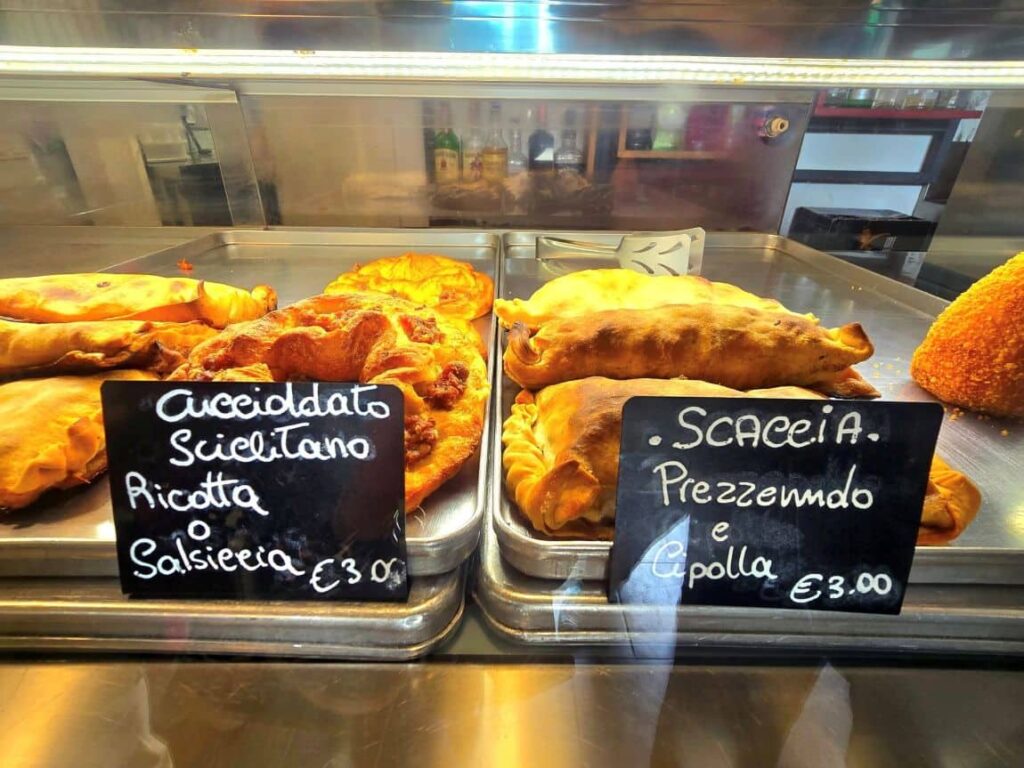
Think of scacciata, also called scaccia, as Sicily’s answer to stuffed pizza. It’s a rustic, folded bread stuffed with seasonal fillings: potatoes and sausage in winter, broccoli and cheese in autumn, or even anchovies and onions. Every Sicilian family has their own version, especially around Christmas.
It’s the kind of food you eat with your hands, warm from the bakery, sitting on a piazza bench. The dough is soft and chewy, the fillings rich and hearty.
You’ll find scacciata in Catania’s and Scicli`s bakeries and bars —’ O Spicu bar in Scicli has fantastic! Read more: A Guide to Scicli Sicily
13. Stigghiole – Palermo
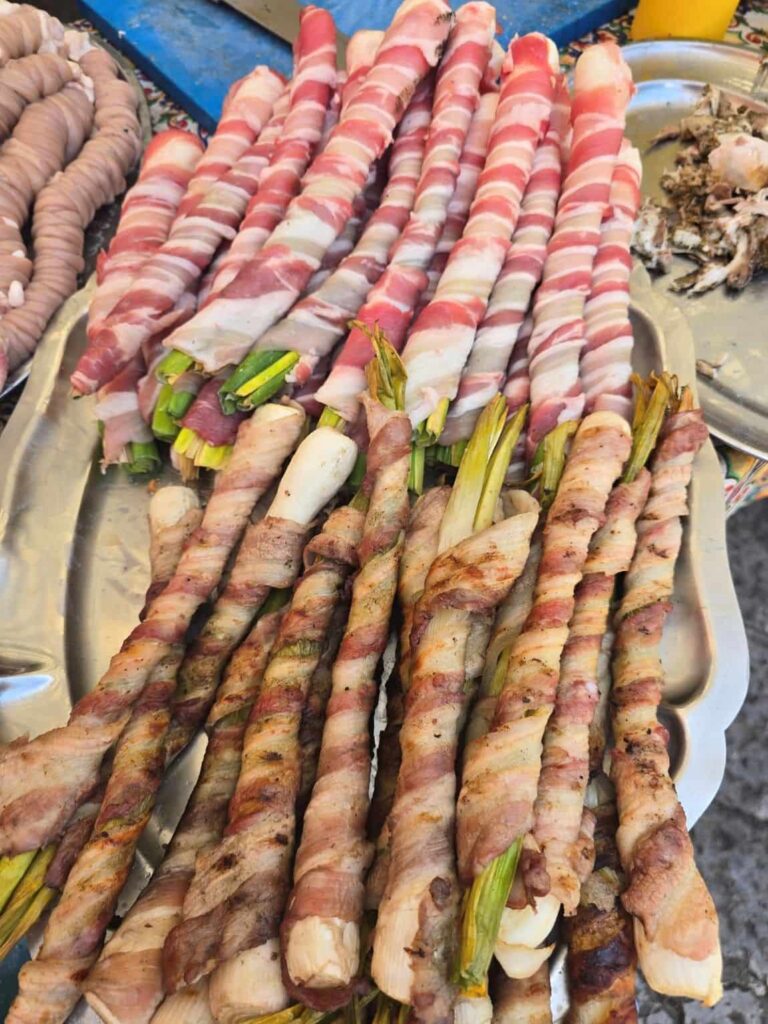
Now for one of Palermo’s most famous street foods: stigghiole. These are skewers of lamb or goat intestines, cleaned, seasoned with parsley and lemon, then grilled over hot coals.
I know—it sounds intense. But it’s smoky, chewy, and surprisingly delicious if you’re adventurous. Stigghiole are a throwback to a time when no part of the animal was wasted, and they’re still beloved by locals today.
Best eaten at Palermo’s street markets (Ballarò or Vucciria) straight from the grill. I highly recommend taking this Palermo street food tour.
Read more: The 21 Must-Try Foods in Palermo, Sicily
14. Pani câ meusa (Pane con la Milza) – Palermo
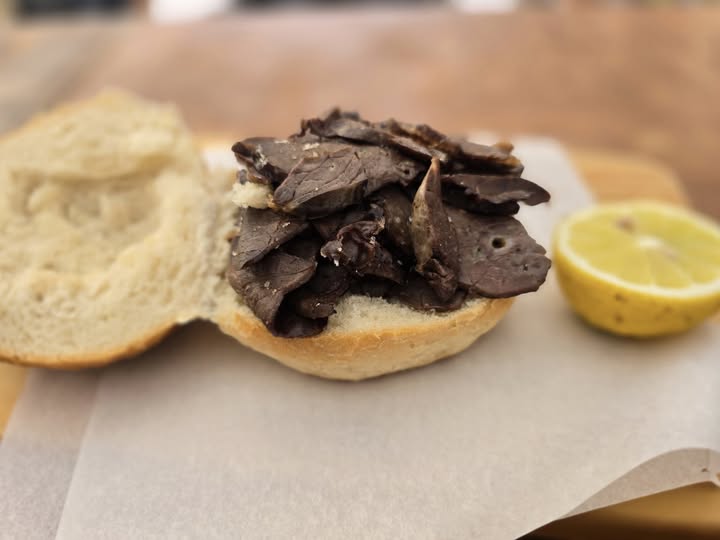
This is Palermo’s iconic street sandwich: soft sesame bread stuffed with slow-cooked cow spleen, often with ricotta or caciocavallo cheese. It’s not fancy, but it’s deeply flavorful—rich, meaty, and a little earthy.
Known locally as pani câ meusa, it was originally created by Jewish butchers in Palermo centuries ago. Today, it’s still a must-try for street food lovers.
Go straight to Antica Focacceria San Francesco in Palermo for the classic version.
15. Pane e Panelle – Palermo
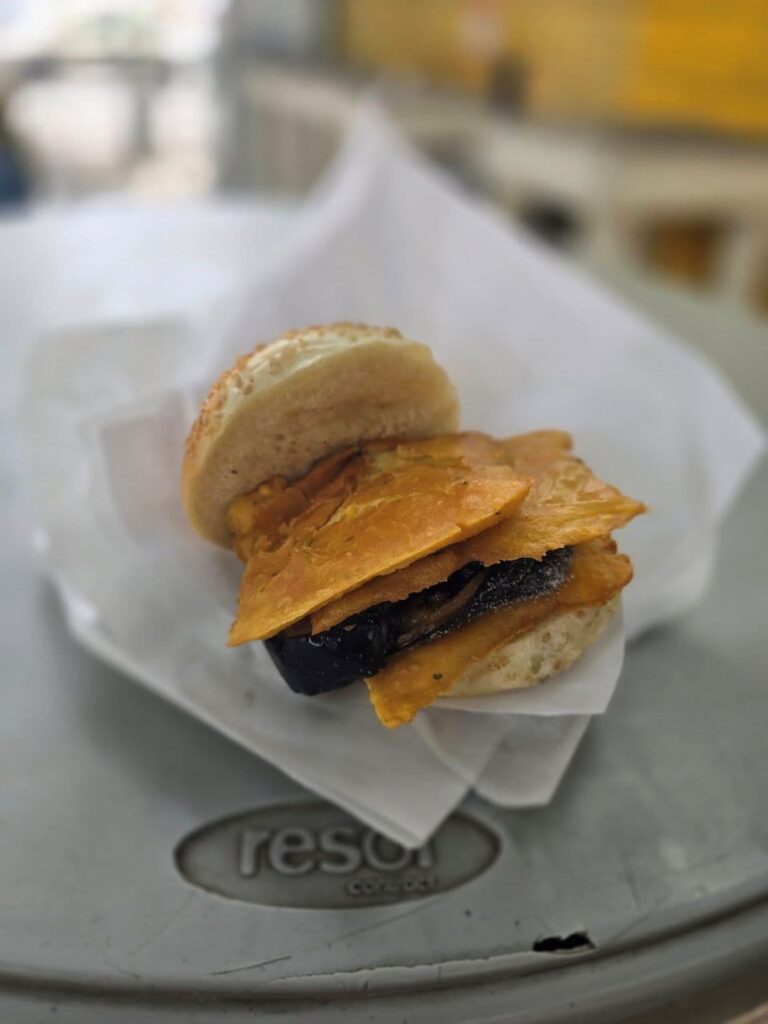
If spleen sandwiches aren’t your thing, Palermo has a lighter street food: pane e panelle. These are chickpea fritters (panelle), fried golden and tucked into bread. Sometimes they’re paired with potato croquettes for extra crunch.
It’s cheap, filling, and vegan-friendly—proof that Sicilian street food has something for everyone. Crispy, salty, and best eaten hot, pane e panelle is a street market staple.
Pick one up at Friggitoria Chiluzzo in Palermo.
16. Carne di Cavallo alla Brace – Catania
In eastern Sicily, especially Catania, locals love grilled horse meat (carne di cavallo). It’s often served as skewers, sausages, or steaks cooked over open coals, seasoned simply with olive oil and salt.
It might sound unusual, but it’s part of Sicily’s traditional cuisine, prized for its lean, rich flavor. When eaten fresh off the grill, it’s tender and smoky—perfect with a glass of local red wine.
Try it at Via Plebiscito in Catania, where grill stalls line the street and the smell of roasting meat fills the air.
17. Caponata – Everywhere in Sicily (but best in Palermo)
If you love vegetables, this one’s for you. Caponata is a sweet-and-sour eggplant stew, cooked with celery, capers, olives, onions, and tomatoes, then finished with a splash of vinegar and sugar. Every family has their own version—some add pine nuts or raisins—but it’s always a flavor bomb.
The roots go back to Arab and Spanish influences, which explains that sweet-sour balance. It’s usually eaten as an antipasto or a side dish, served at room temperature.
Best enjoyed in Palermo, where you’ll find it on almost every trattoria menu.
18. Gelato con Brioche – Everywhere in Sicily (Catania & Taormina for the best)
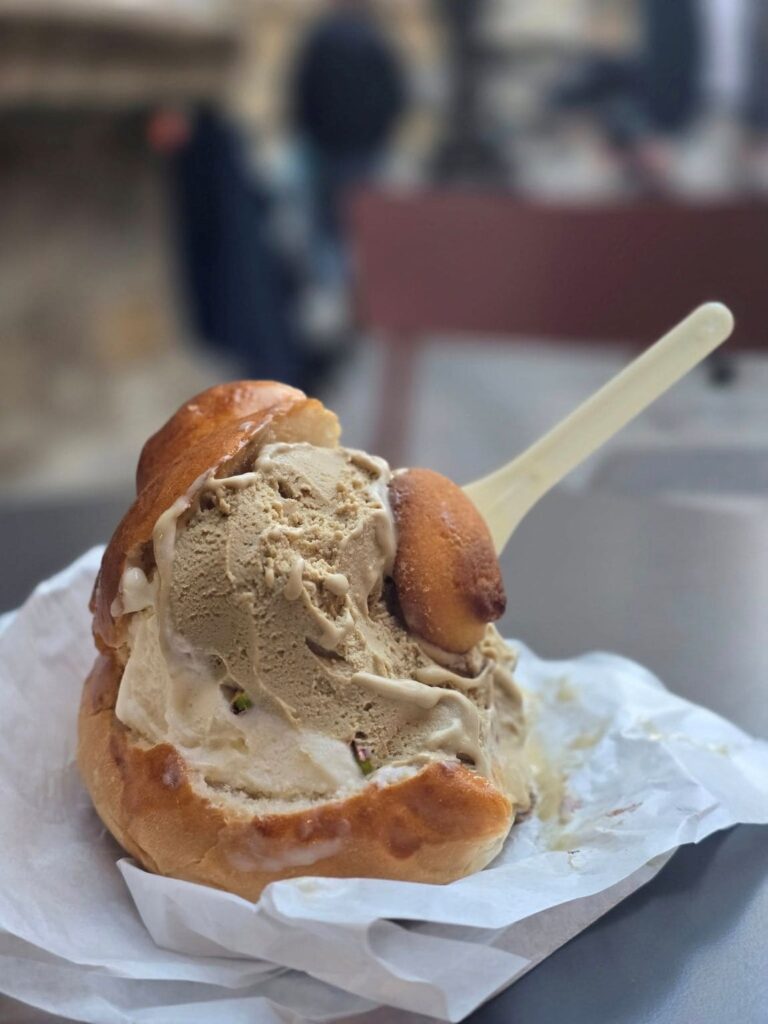
Forget cones. In Sicily, gelato is often served in a soft, golden brioche bun—yes, an ice cream sandwich for breakfast! Locals order a brioche con gelato on hot summer mornings, usually with flavors like pistachio, almond, or lemon.
The brioche is slightly sweet, fluffy, and perfect for scooping up melting gelato. It’s indulgent but somehow feels completely normal here.
Try it in Catania at Savia or in Taormina at Bam Bar. Read more: A Guide to the Best Traditional Sicilian Desserts.
19. Cannoli – Palermo & Everywhere
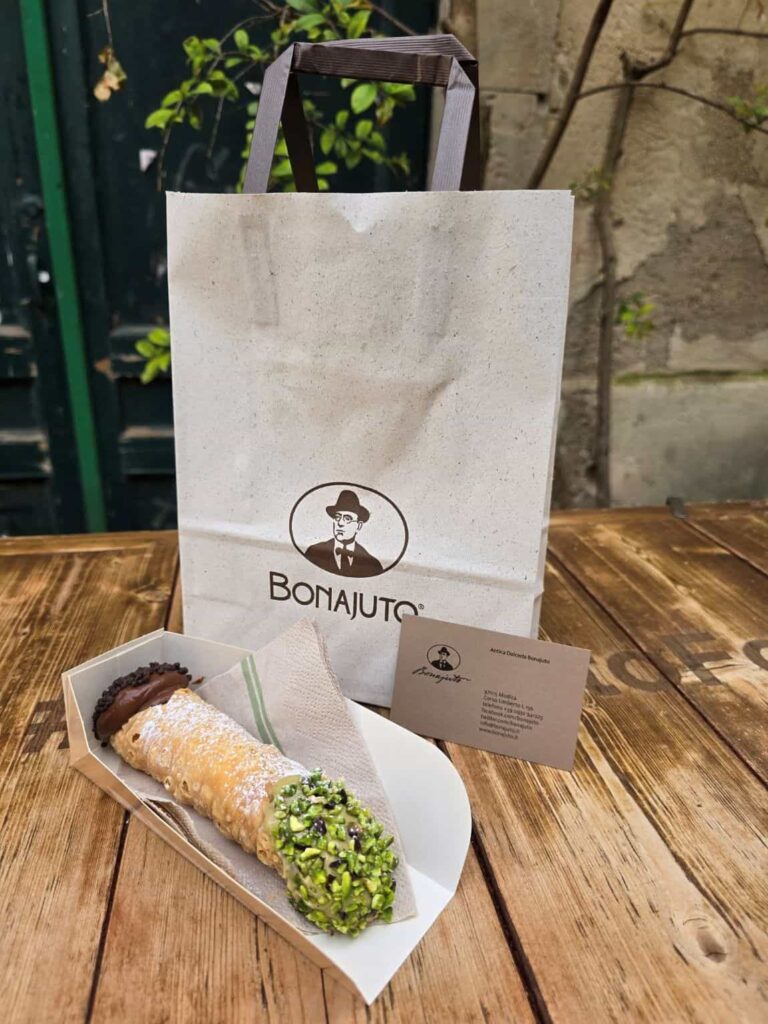
Probably the most famous Sicilian dessert, cannoli are crisp pastry tubes filled with sweet ricotta cream, often with chocolate chips, candied orange, or pistachio.
Cannoli were originally made for Carnevale, but now you’ll find them year-round. The trick is freshness: the shell should be filled just before you eat it, so it stays crunchy.
The classic spots are I Segreti del Chiostro in Palermo and the Antica Dolceria Bonajuto in Modica. But honestly, you can’t leave Sicily without trying a cannolo wherever you are.
20. Genovesi di Erice – Erice
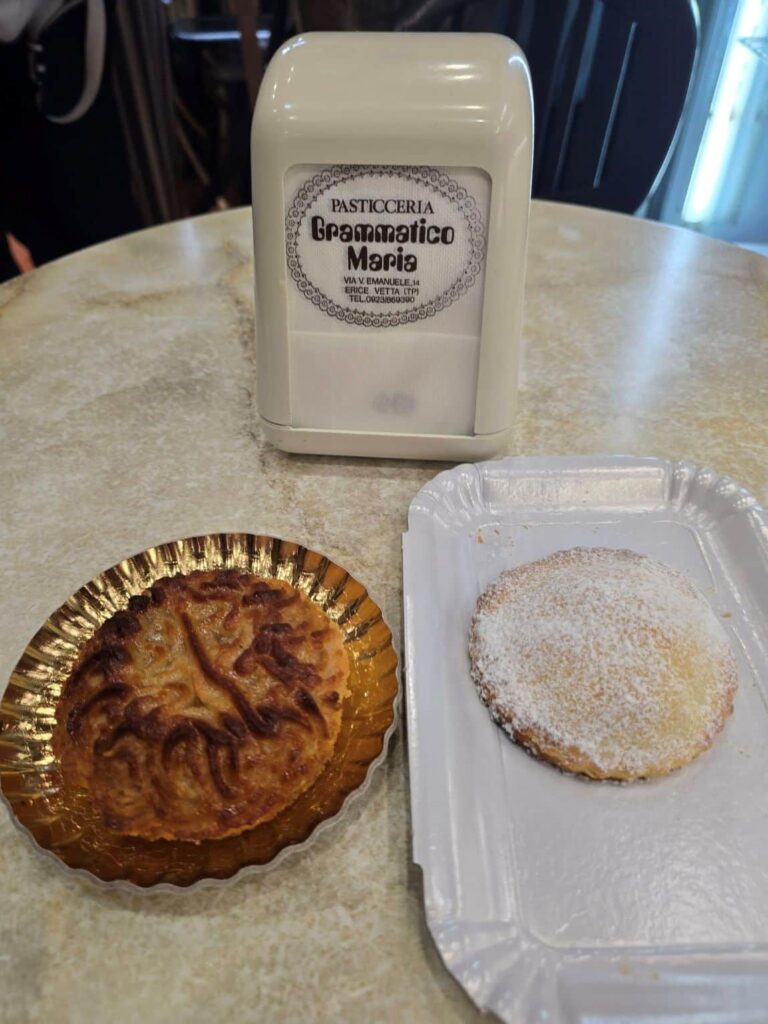
High in the medieval hill town of Erice, I discovered genovesi—delicate pastry domes dusted with sugar and filled with warm custard cream. They’re best eaten straight from the oven, when the filling is still soft and velvety.
The name “genovesi” comes from their supposed Ligurian origin, but they’ve become an Erice specialty. They’re less famous than cannoli, but equally unforgettable.
Head to Maria Grammatico’s pastry shop in Erice—she’s legendary. Read more: A Guide to Erice, Sicily
21. Granita – Eastern Sicily (Catania)
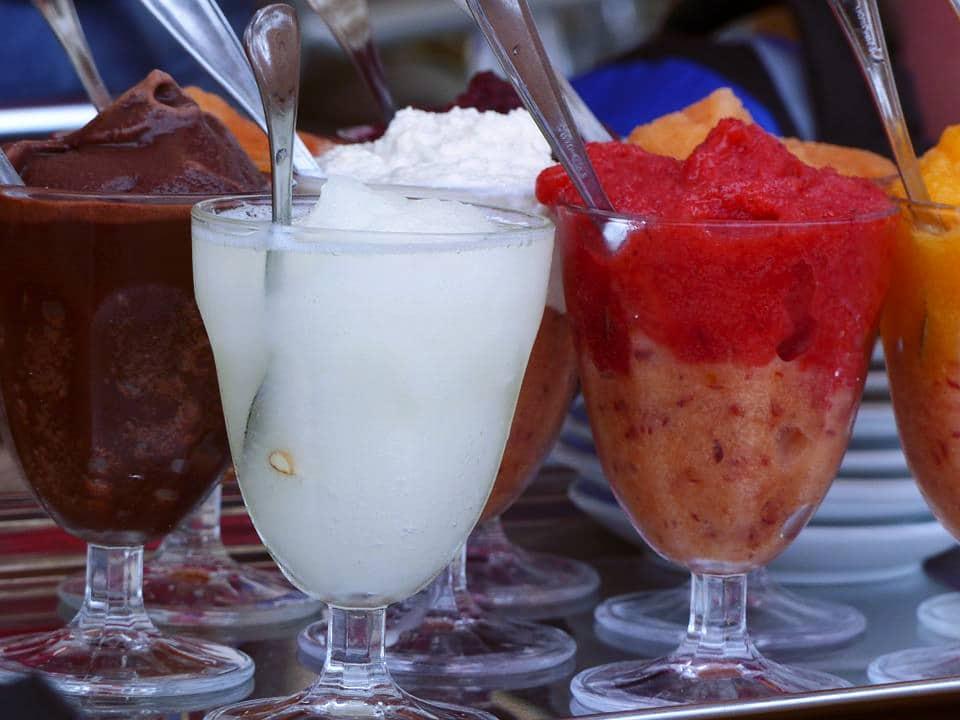
Granita is Sicily’s answer to a heatwave: a semi-frozen dessert made from fruit, sugar, and water, churned into a smooth, icy treat. The classic flavors are lemon, almond, and coffee, though you’ll also find strawberry, pistachio, and mulberry.
In eastern Sicily, granita is a morning ritual, served with—you guessed it—a brioche. It’s lighter than gelato and perfect for summer.
For the best, go to Catania. In Taormina, Bam Bar is a cult favorite.
22. Cassata Siciliana – Palermo
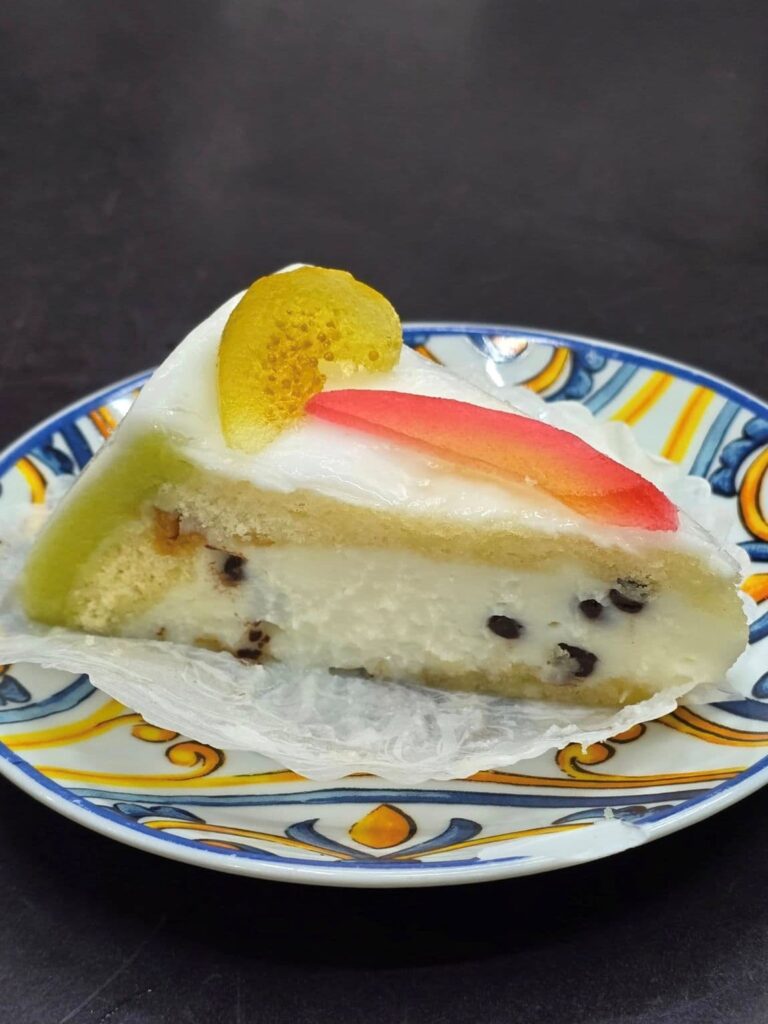
If Sicily had a celebration cake, it would be cassata. A sponge cake layered with ricotta, candied fruit, and marzipan, covered in bright green and white icing. It’s as over-the-top as it sounds.
Cassata dates back to Arab times (the word comes from qas’ah, meaning “bowl”), and today it’s usually eaten around Easter. Sweet, rich, and colorful—it’s more than dessert, it’s a slice of Sicilian history.
Best tried in Palermo at traditional pastry shops like I Segreti del Chiostro.
23. Frutta Martorana – Palermo & Monreale
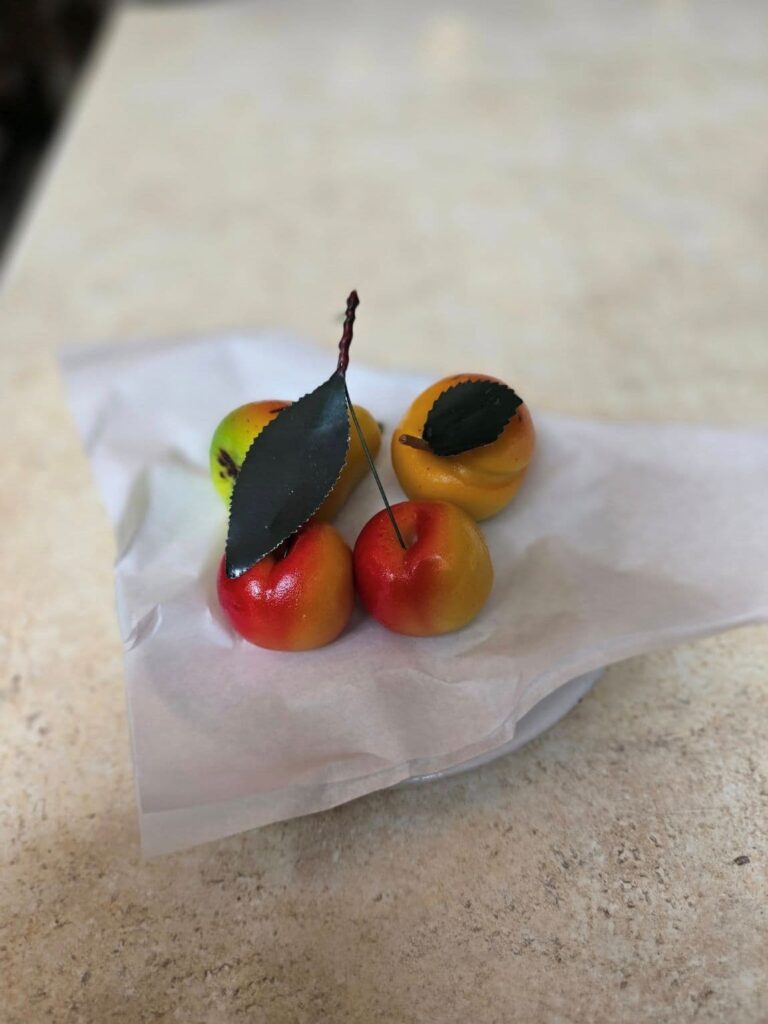
At first glance, you’ll think these are real fruits. But they’re not—they’re frutta martorana, marzipan sweets sculpted and painted to look like miniature apples, pears, oranges, and bananas.
They were invented by nuns in Palermo’s Martorana convent, who displayed them as decorations when real fruit wasn’t in season. Today, they’re a festive treat, especially around All Saints’ Day in November.
Look for them in Palermo and Monreale, especially near the Martorana Church in Palermo.
24. Iris Siciliano – Palermo
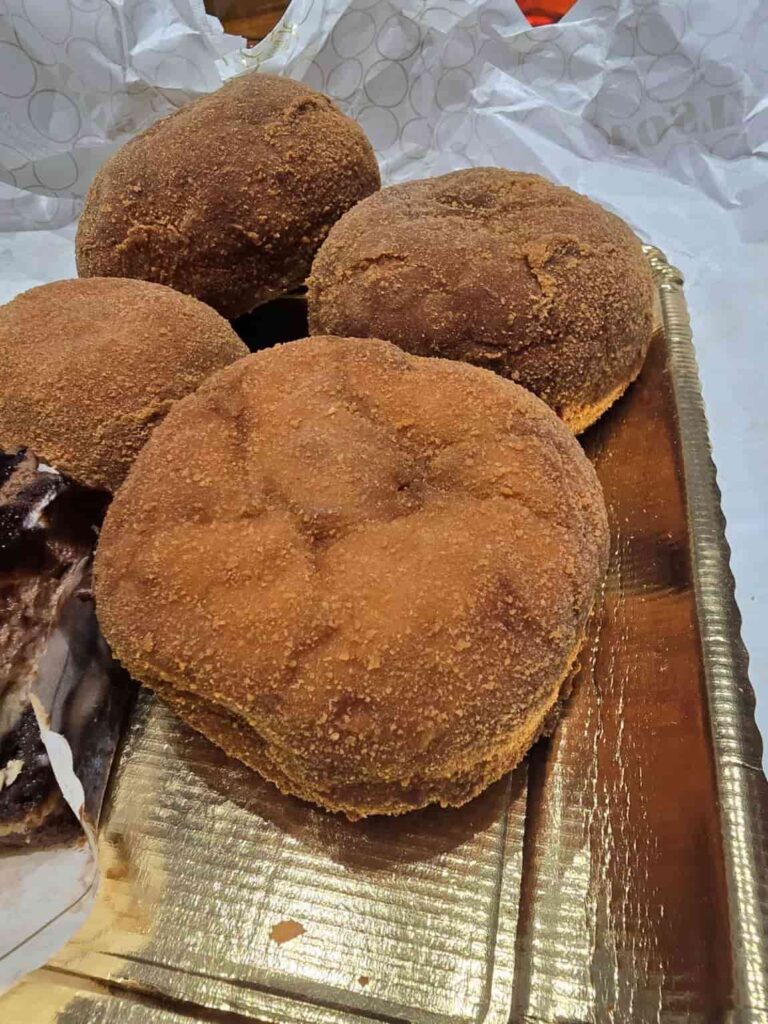
If you’re a fan of fried dough (and honestly, who isn’t?), then you have to try the Iris Siciliano in Palermo. It’s a big, golden, deep-fried pastry ball filled with either sweet ricotta cream, chocolate, or custard.
It was invented in the 1900s by a Palermo pastry chef, Antonio Lo Verso, and named after the opera Iris. Over time, it became a local street food staple, sold in bakeries and bars. Bite into one warm, and you’ll get the perfect combo of crispy shell and creamy filling.
For the best, stop at Pasticceria I Segreti del Chiostro in Palermo—a local institution.
25. Modica Chocolate – Modica
Down in the baroque town of Modica, chocolate takes a very different form. Cioccolato di Modica is still made the old Aztec way, introduced by the Spanish in the 16th century. It’s cold-processed, so the sugar crystals never fully melt, giving it a grainy texture and an intense, almost earthy flavor.
Unlike modern chocolate, it doesn’t contain milk or butter—just cacao, sugar, and natural flavorings. Traditional varieties include cinnamon, chili, vanilla, and orange peel.
It’s not like any chocolate you’ve ever had, and that’s exactly why it’s a must-try.
Go to Antica Dolceria Bonajuto in Modica, the oldest chocolate shop in Sicily, for the real deal. Read more: A Guide to Modica, Sicily.
Wrapping Up the Best Sicilian Food To Try in Sicily
And there you have it—25 of the best traditional Sicilian foods I tasted while road-tripping across the island. From street food in Palermo to chocolate in Modica, these dishes tell Sicily’s story better than any museum ever could.
If you’re planning your own trip, treat this list like your must-try Sicilian food bucket list—and come hungry.
- Venice Carnival 2026 Is Calling: January 31–February 17 — Reserve Your Calendar Now - January 7, 2026
- The Most Luxurious Secret Castle Hotels in Italy: Romantic Escapes You Won’t Believe You Can Stay In - November 14, 2025
- Vienna, Where Time Waltzes — The Most Magical Things to Do in Vienna, Austria - November 8, 2025

